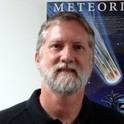
The quiet-time structure of the plasmaspheric density was investigated using observations of the Los Alamos geosynchronous satellites, and these observations were compared with theoretical predictions of the quasi-static localtime variation by a kinetic model. It was found that the coupling to the ionosphere (via the local-time variation of the exobase) played a key role in determining the density structure at 6.6 RE. The kinetic model predicts that most of the local-time variation at geosynchronous orbit is due to the variation of the exobase parameters. During quiet times, when the convection electric field is dominated by the corotation field, the effects due to flux-tube convection are less prominent than those due to the exobase variation. In addition, the kinetic model predicts that the geosynchronous plasmaspheric density level is at most only 25% of saturation density, even when geomagnetic activity is low. The low night-time densities of the ionospheric footpoints, and the subsequent long trapping time scales, prevent the equatorial densities from reaching saturation
Available at: http://works.bepress.com/m_a_reynolds/10/
